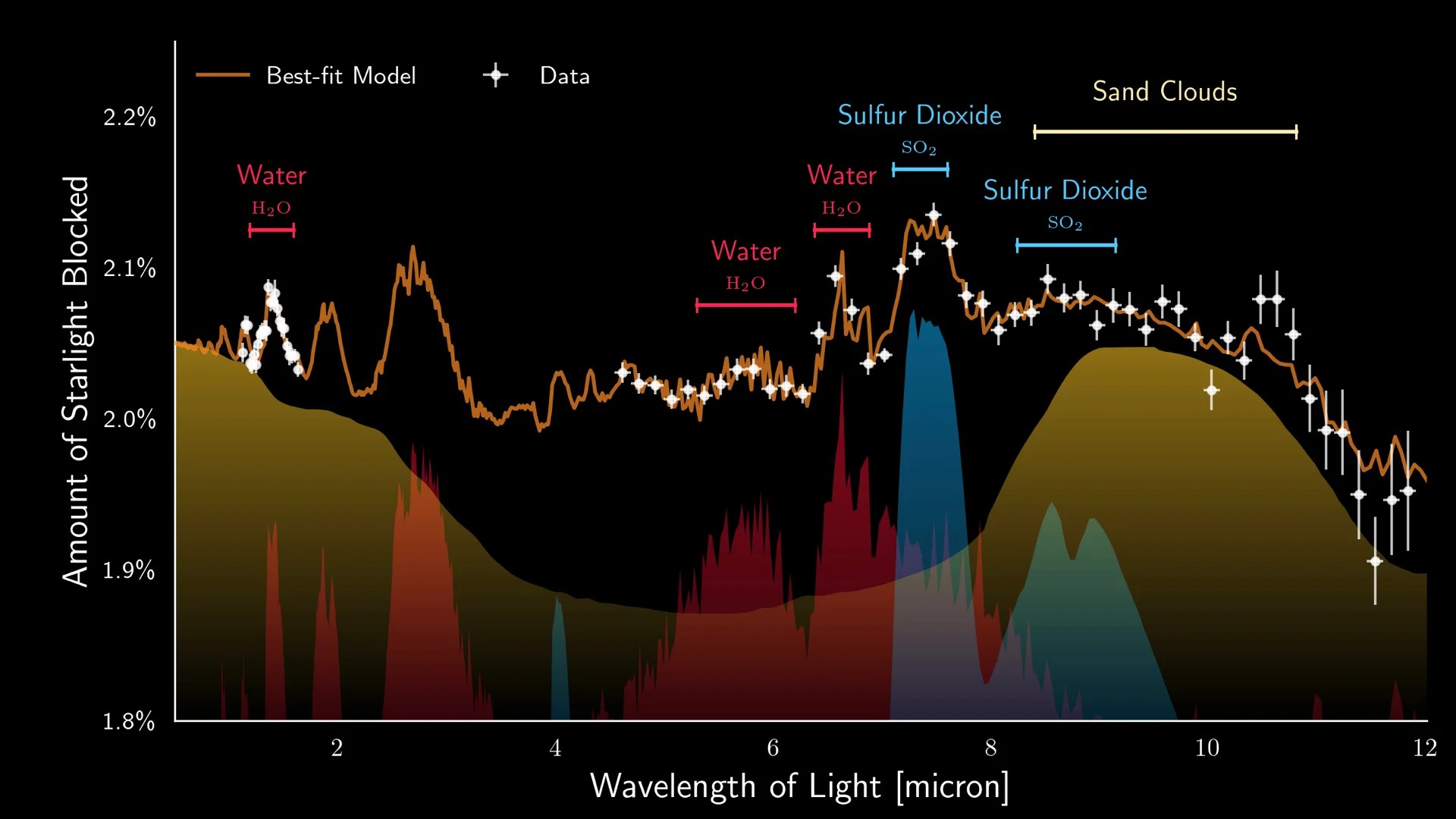James Webb spots exoplanet with sand clouds and sulfur-filled skies
The James Webb Space Telescope has revealed something intriguing about a gas giant exoplanet known as WASP-107b. The Neptune-like gas giant currently orbits a star roughly 211 light-years from Earth and was first discovered in 2017. Now, Webb has revealed that the planet has sand clouds and high volumes of sulfur in its clouds.
This new discovery helps us learn more about the distant exoplanet, including the fact that its atmosphere is not dense enough to block out observations by the James Webb space telescope. By peering into the world using the telescope’s Mid-Infrared Instrument (MIRI), astronomers were able to learn more about its makeup.
According to wavelength measurements, WASP-107b has high concentrations of sulfur in its atmosphere and sand clouds that fill its skies. The planet is considered somewhat fluffy because of the high measurements of sand, water, and sulfur dioxide found within its atmosphere. Surprisingly, though, astronomers did not detect methane in the atmosphere.
It’s the fluffy nature of the planet’s atmosphere that allowed astronomers to peer so deeply into it using the James Webb, and that fluffy nature is the only reason that we were able to confirm the presence of sand clouds and sulfur dioxide within the skies. Webb has also discovered similar gritty-looking clouds on other exoplanets, and it continues to search for clues to help solve the mysteries of the early universe.
This new discovery is exciting, though, because it continues to teach us more about the various exoplanets that make up our universe. A new study on the discovery is available in the journal Nature, and it highlights the steps and measurements that the team took to discover the sand clouds using James Webb.
Despite the makeup of WASP-107b, astronomers say that the planet’s star is relatively cool and doesn’t emit many high-energy photons. However, because of the fluffy and airy nature of the gas giant’s atmosphere, the emitted photons can penetrate deep into the atmosphere, catalyzing reactions that create the high concentration of sulfur dioxide detected using Webb’s MIRI.
The James Webb Space Telescope has revealed something intriguing about a gas giant exoplanet known as WASP-107b. The Neptune-like gas giant currently orbits a star roughly 211 light-years from Earth and was first discovered in 2017. Now, Webb has revealed that the planet has sand clouds and high volumes of sulfur in its clouds.
This new discovery helps us learn more about the distant exoplanet, including the fact that its atmosphere is not dense enough to block out observations by the James Webb space telescope. By peering into the world using the telescope’s Mid-Infrared Instrument (MIRI), astronomers were able to learn more about its makeup.
According to wavelength measurements, WASP-107b has high concentrations of sulfur in its atmosphere and sand clouds that fill its skies. The planet is considered somewhat fluffy because of the high measurements of sand, water, and sulfur dioxide found within its atmosphere. Surprisingly, though, astronomers did not detect methane in the atmosphere.

It’s the fluffy nature of the planet’s atmosphere that allowed astronomers to peer so deeply into it using the James Webb, and that fluffy nature is the only reason that we were able to confirm the presence of sand clouds and sulfur dioxide within the skies. Webb has also discovered similar gritty-looking clouds on other exoplanets, and it continues to search for clues to help solve the mysteries of the early universe.
This new discovery is exciting, though, because it continues to teach us more about the various exoplanets that make up our universe. A new study on the discovery is available in the journal Nature, and it highlights the steps and measurements that the team took to discover the sand clouds using James Webb.
Despite the makeup of WASP-107b, astronomers say that the planet’s star is relatively cool and doesn’t emit many high-energy photons. However, because of the fluffy and airy nature of the gas giant’s atmosphere, the emitted photons can penetrate deep into the atmosphere, catalyzing reactions that create the high concentration of sulfur dioxide detected using Webb’s MIRI.
